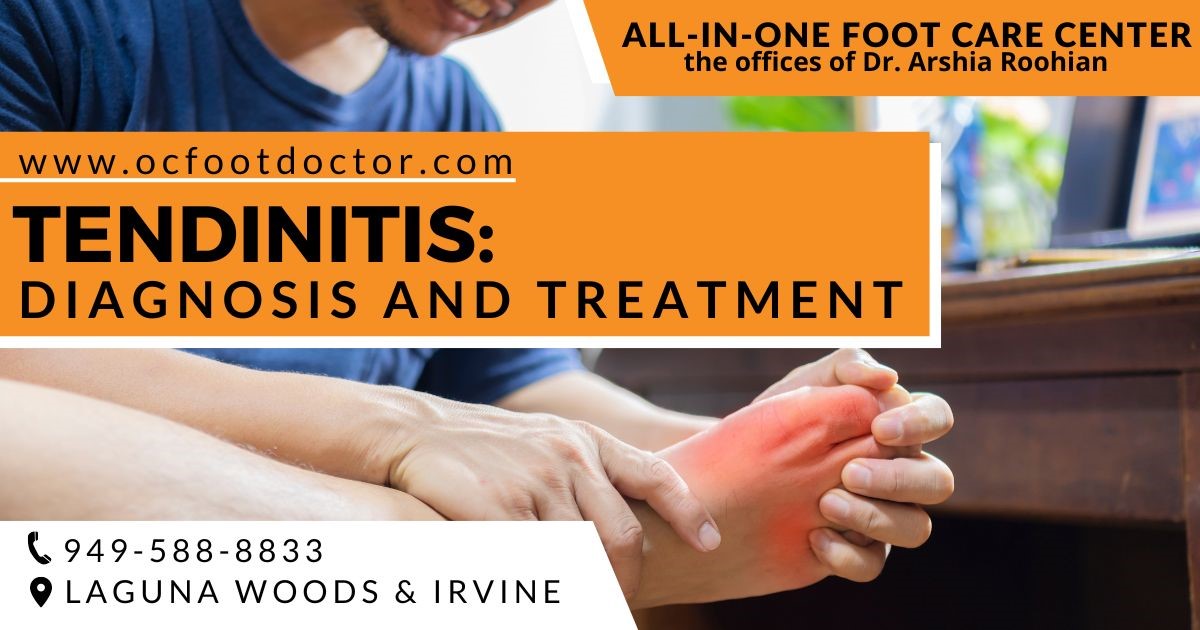Tendinitis: Diagnosis and Treatment

Muscles are attached to bones by tendons. It's called tendinitis when a tendon becomes damaged and swollen as a result of repeated use. Movement can be hindered by this, which is usually painful.
Here are some symptoms you may experience if you think you have tendinitis.
The symptoms
Tendinitis typically manifests as:
- Swelling
- Tenderness
- A grating sensation when moving a joint
- Dull, aching pain around a joint
- Discomfort with movement, improvement with rest
It is important to note that sprains generally occur as a result of one-time injuries that overstretch or tear the tendons, rather than being caused by repeated strain.
It is not uncommon for people to develop tendinitis, which is a type of repetitive sports injury. For example, tennis elbow and pitcher's shoulder. There are many types of jobs that require repeated use of the same part of the body which can cause tendinitis. These include house painting, landscaping, and cleaning. Electricians and flight attendants are often forced to reach overhead, which can result in tendinitis. Using vibrating power tools for a prolonged period of time can also cause it.
It is also possible to irritate tendons over time from poor posture while sitting in front of a computer or excessive use of the hands while playing video games.
The risk of tendinitis is also increased by certain medical conditions and medications, such as certain blood and kidney diseases, gout, rheumatoid arthritis, and antibiotics.
Additionally, tendons become less flexible with age, which increases the risk of tendinitis in people over 40.
Treatment of tendinitis
Consult a physician if you think you have tendinitis. Your doctor will examine the painful area and take a medical history. It is usually possible to diagnose and treat most cases without imaging tests and prescription medication, but if the problem doesn't improve with time, those treatments might be necessary.
A diagnostic imaging test, such as MRIs or ultrasounds, may be performed at that point. To rule out gout or infection, a small amount of fluid may also be removed from the painful joint. An antibiotic may be prescribed if an infection occurs. It is possible to receive a steroid injection to reduce inflammation and discomfort. Surgery is rarely required in extreme or persistent cases.
Here are some things you'll likely be advised to do if you have tendinitis.
The acronym RICE stands for rest, ice, compression, and elevation.
- Rest the overstressed joint by stopping the activity that caused the problem and wearing a splint or brace to prevent movement.
- Ice the area. Cold can help reduce inflammation and pain. Although you may be tempted to put a hot pack or heating pad on the injured area, wait until any swelling has gone down.
- Compression involves applying a snug bandage to the area to stop it from moving and reduce swelling. If the area becomes numb, loosen the bandage.
- Elevate the ankle or knee joint by sitting sideways on the couch with pillows propping up your leg or using a low table.
The pain and swelling can be reduced with over-the-counter medications such as aspirin, ibuprofen, or naproxen, either orally or topically.
It's important to see a physical therapist so they can help you manage pain, gain strength and mobility, and teach you how to move your body so it heals.
Tendinitis prevention
You can prevent tendinitis and keep it from recurring if you have one of the risk factors or engage in repetitive activities that strain your joints:
Try something different. If you enjoy sports, don't give it up, but try something different for a while.
If you want to prevent undue strain on your body, get a coach. A sports trainer or physical therapist can teach you how to move correctly.
It's common for athletes to stretch before they start a workout - it loosens the joints and prevents injury. Get up and stretch from time to time even if you sit for long periods of time at your desk.
Don't force a joint to heal if you don't want it to.
If you have repetitive stress injuries or joint pain.
You can contact our office at 949-588-8833, or visit our website at https://www.ocfootdoctor.com. Our offices are in Laguna Hills, Irvine, Mission Viejo, Aliso Viejo, Lake Forest, Foothill Ranch, and Costa Mesa.
📲 949-588-8833
🏢 24331 El Toro Rd, Suite 370 Laguna Woods CA 92637
🏢Irvine Medical Arts Building 113 Waterworks Way, Suite 250 Irvine, CA 92618
🌐 https://www.ocfootdoctor.com/
The information contained above is intended for general reference purposes only. It is not a substitute for professional medical advice or a medical exam. Always seek the advice of your physician or other qualified health professionals before starting any new treatment. Health information on this website MUST NOT be used to diagnose, treat, cure or prevent any disease without the supervision of your doctor.


